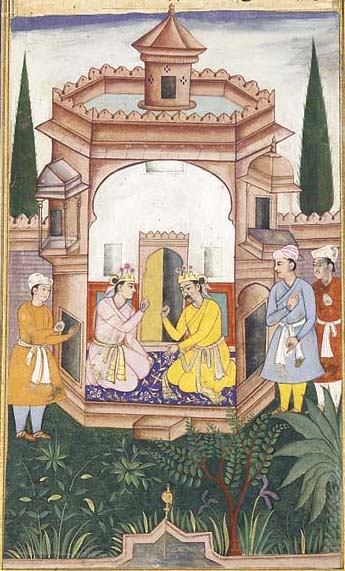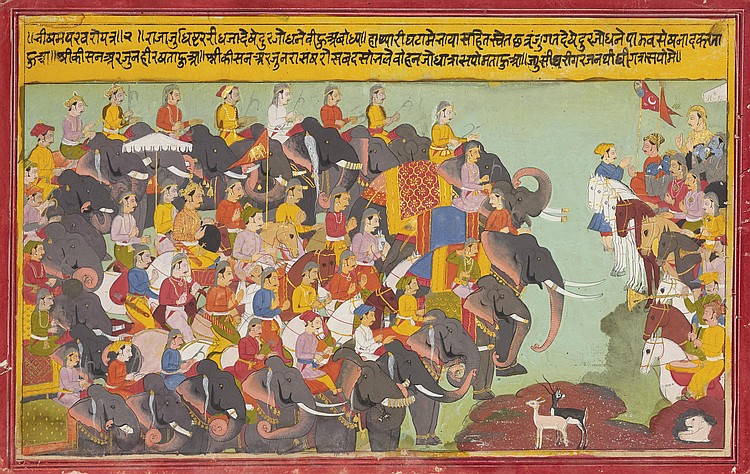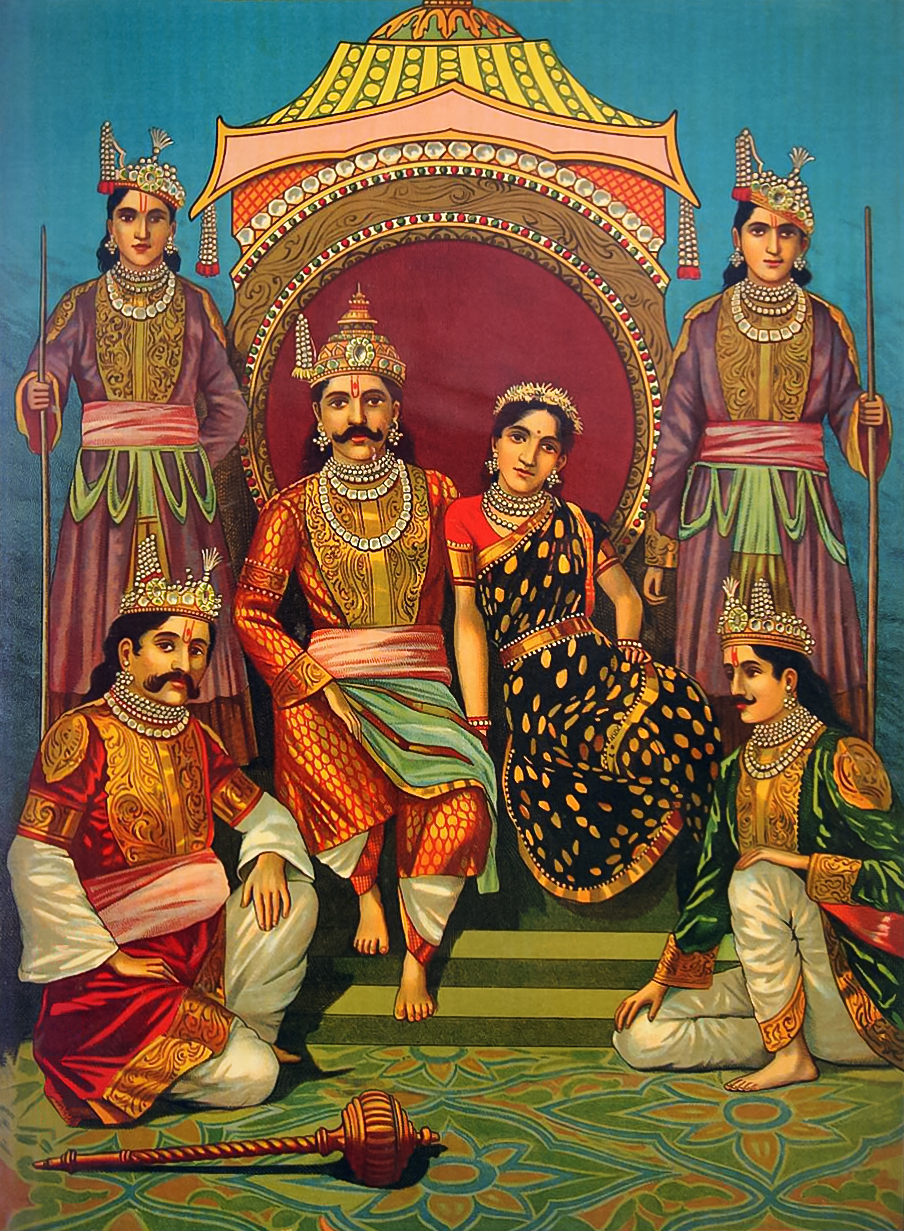|
Vidarbha (kingdom)
The Vidarbha kingdom in the Sanskrit epic Mahabharata is among the many kingdoms ruled by Yadu kings (Bhoja Yadavas). It was situated in the region still known as Vidarbha in what is now Maharashtra in central India. Damayanti, the wife of Nala was the princess of Vidarbha. Similarly Rukmini, the eldest wife of Vasudeva Krishna was from Vidarbha. Sage Agastya's wife Lopamudra, also was a princess from the country of Vidarbha as mentioned in the ''Mahabharata''. , translated by (1883–1896), Book 3: Vana Parva: Tirtha-yatra Parva: Section XCVII. In ... [...More Info...] [...Related Items...] OR: [Wikipedia] [Google] [Baidu] |
Vidarbha
Vidarbha (Pronunciation: Help:IPA/Marathi, [ʋid̪əɾbʱə]) is a geographical region in the west Indian States and union territories of India, state of Maharashtra. Forming the eastern part of the state, it comprises Amravati Division, Amravati and Nagpur Division, Nagpur divisions. As per the 2011 Census of India, 2011 Census, the region had a population of 23,003,179. The region occupies 31.6% of the total area and is home to 21.3% of the total population of Maharashtra. Situated in central India, it borders the state of Madhya Pradesh to the north, Chhattisgarh to the east, Telangana to the south and Marathwada and North Maharashtra, Uttar Maharashtra regions of Maharashtra to the west. According to the Hindu epic ''Mahabharata'', Rukmini, the wife of lord Krishna, was born to Bhishmaka, the king of the Vidarbha kingdom. Vidarbha was part of the Satavahana Empire during 1st to 2nd century CE). The coins and inscriptions from the period of Paramaras, Paramara king Jagadeva ... [...More Info...] [...Related Items...] OR: [Wikipedia] [Google] [Baidu] |
Kisari Mohan Ganguli
Kisari Mohan Ganguli (also K. M. Ganguli) was an Indian translator known for being the first to provide a complete translation of the Sanskrit epic Mahabharata in English. His translation was published as ''The Mahabharata of Krishna-Dwaipayana Vyasa Translated into English Prose'' between 1883 and 1896, by Pratap Chandra Roy (1842–1895), a Calcutta bookseller who owned a printing press and raised funds for the project. Publication of the translation The "Translator's Preface" in Book 1: Adi Parva, Ganguli mentions the sequence of events that led to the publication. Sometime in the early 1870s, Pratapa Chandra Roy, with Babu Durga Charan Banerjee, visited Ganguli at his home in Shibpur in Howrah, Bengal, requesting him to take up the translation project, which he took up after initial reluctance and a second meeting, when extensive plans were drawn, and the copy of a translation by Max Müller was left behind, made some thirty years ago, which on study Ganguli found to be lit ... [...More Info...] [...Related Items...] OR: [Wikipedia] [Google] [Baidu] |
Karnataka
Karnataka ( ) is a States and union territories of India, state in the southwestern region of India. It was Unification of Karnataka, formed as Mysore State on 1 November 1956, with the passage of the States Reorganisation Act, 1956, States Reorganisation Act, and renamed ''Karnataka'' in 1973. The state is bordered by the Lakshadweep Sea to the west, Goa to the northwest, Maharashtra to the north, Telangana to the northeast, Andhra Pradesh to the east, Tamil Nadu to the southeast, and Kerala to the southwest. With 61,130,704 inhabitants at the 2011 census, Karnataka is the List of states and union territories of India by population, eighth-largest state by population, comprising 31 List of districts in India, districts. With 15,257,000 residents, the state capital Bengaluru is the largest city of Karnataka. The economy of Karnataka is among the most productive in the country with a gross state domestic product (GSDP) of and a per capita GSDP of for the financial year 2023– ... [...More Info...] [...Related Items...] OR: [Wikipedia] [Google] [Baidu] |
Konkan
The Konkan is a stretch of land by the western coast of India, bound by the river Daman Ganga at Damaon in the north, to Anjediva Island next to Karwar town in the south; with the Arabian Sea to the west and the Deccan plateau to the east. The hinterland east of the coast has numerous river valleys, riverine islands and the hilly slopes known as the Western Ghats; that lead up into the tablelands of the Deccan. The Konkan region has been recognised by name, since at least the time of Strabo, in the third century CE. It had a thriving mercantile port with Arab tradesmen from the 10th century onwards. The best-known islands of Konkan are Ilhas de Goa, the site of the Goa state's capital at Panjim; also, the Seven Islands of Bombay, on which lies Mumbai, the capital of Maharashtra & the headquarters of Konkan Division. Definition Historically, the limits of Konkan have been flexible, and it has been known by additional names like " Aparanta" and "Gomanchal", the lat ... [...More Info...] [...Related Items...] OR: [Wikipedia] [Google] [Baidu] |
Ayodhya (Ramayana)
Ayodhya is a city mentioned in the ancient Sanskrit-language texts, including the ''Ramayana'' and the ''Mahabharata''. These texts describe it as the capital of the Ikshvaku kings, including Rama. The historicity of this legendary city is of concern to the Ayodhya dispute. According to one theory, it is same as the present-day Indian city of Ayodhya. According to another theory, it is a fictional city, and the present-day Ayodhya (originally called Sākēta) was renamed after it around the 4th or 5th century, during the Gupta period. Scriptural references According to the ''Ramayana'', Ayodhya was founded by Manu, the progenitor of mankind, and measured 12x3 '' yojanas'' in area. Both the ''Ramayana'' and the ''Mahabharata'' describe Ayodhya as the capital of the Ikshvaku dynasty of Kosala, including Rama and Dasharatha. The ''Purana-pancha-lakshana'' also describes the city as the capital of Ikshvaku kings, including Harishchandra. The ''Ramayana'' states that t ... [...More Info...] [...Related Items...] OR: [Wikipedia] [Google] [Baidu] |
Kosala Kingdom
Kosala is the kingdom of Rama mentioned in the Ramayana. Ayodhya (Ramayana), Ayodhya was its capital and is now located in Uttar Pradesh. Rama's sons Lava (Ramayana), Lava and Kusha (Ramayana), Kusha inherited parts of this kingdom. Lava ruled from the city called Shravasti, and Kusa from the city called Kushavati. A colony of Kosala kings existed in Madhya Pradesh. It was called Dakshina Kosala. Rama's mother Kausalya was from this kingdom. Rama extended his influence up to the island-kingdom of Lanka situated in the Indian Ocean. He had friendly relations with the southern kingdom of Kishkindha. Rama's brother Bharata (Ramayana), Bharata, colonized the Gandhara kingdom, Gandhara kingdom and founded the city of Taxila, Takshasila and his descendants named as Gaur (clan), Gaud kshatriya. Gandhara lied close to Kekeya Kingdom, the native kingdom of Bharata's mother, Kaikeyi. Rama's second brother Lakshmana founded the city of Lakshmanapura near river Ganges which is now known a ... [...More Info...] [...Related Items...] OR: [Wikipedia] [Google] [Baidu] |
Bhishma
Bhishma (), also known as Pitamaha, Gangaputra, and Devavrata, is a central figure in the Hindu epic Mahabharata. He was a statesman and military commander of the ancient Kuru Kingdom. Renowned for his wisdom, valor, and unwavering principles, Bhishma served as the supreme commander of the Kaurava forces during the Kurukshetra War. Born to King Shantanu and the river goddess Ganga, he was originally named Devavrata. He was designated the heir-apparent to the throne. However, he renounced his claim and took a vow of lifelong celibacy to facilitate his father's marriage to Satyavati. This unparalleled sacrifice earned him the title Bhishma, meaning "the one who undertakes a severe vow," and he was blessed with ''Ichcha Mrityu''—the boon of choosing his time of death. Bhishma's life after his vow was marked by unwavering loyalty to the Kuru dynasty. He served as the chief advisor and regent to successive rulers of Hastinapura, including his stepbrothers Chitrangada and Vi ... [...More Info...] [...Related Items...] OR: [Wikipedia] [Google] [Baidu] |
Kauravas
''Kaurava'' is a Sanskrit term which refers to descendants of Kuru, a legendary king of India who is the ancestor of many of the characters of the epic ''Mahabharata''. Usually, the term is used for the 100 sons of King Dhritarashtra and his wife Gandhari. Duryodhana, Dushasana, Vikarna and Chitrasena are the most popular among the brothers. They also had a sister named Dussala and a half-brother named Yuyutsu. Etymology The term ''Kauravas'' is used in the ''Mahabharata'' with two meanings , *The wider meaning is used to represent all the descendants of Kuru. This meaning, which includes the Pandava brothers, is often used in the earlier parts of popular renditions of the ''Mahabharata''. *The narrower but more common meaning is used to represent the elder line of the descendants of Kuru. This restricts it to the children of King Dhritarashtra, excluding the children of his younger brother, Pandu, whose children form the Pandava line. The rest of this article deals ... [...More Info...] [...Related Items...] OR: [Wikipedia] [Google] [Baidu] |
Pandavas
The Pandavas (Sanskrit: पाण्डव, aɳɖɐʋᵊ IAST: Pāṇḍava) is a group name referring to the five legendary brothers, Yudhishtira, Bhima, Arjuna, Nakula, and Sahadeva, who are central figures of the Hindu epic ''Mahabharata''. They are acknowledged as the sons of Pandu, the King of Kuru, but were fathered by different '' Devas'' (gods) due to Pandu's cursed inability to naturally sire children. In the epic, the Pandavas married Draupadi, the princess of Panchala, and founded the city of Indraprastha after the Kuru Kingdom was split to avoid succession disputes. After the split, the other part of the kingdom was ruled by their cousins, the Kauravas. However, the Pandavas lost their kingdom to Duryodhana (eldest and king of the Kauravas) when Yudhishthira gambled it away during a game of dice. The bet Yudhishtira agreed to was that the Pandavas would hand the kingdom over to the Kauravas and go into exile for 12 followed by an year in hiding. After this ... [...More Info...] [...Related Items...] OR: [Wikipedia] [Google] [Baidu] |
Kurukshetra War
The Kurukshetra War (), also called the Mahabharata War, is a war described in the Hindu Indian epic poetry, epic poem ''Mahabharata'', arising from a dynastic struggle between two groups of cousins, the Kauravas and the Pandavas, for the throne of Hastinapura. The war is used as the context for the dialogues of the ''Bhagavad Gita. Background The ''Mahābhārata'' is an account of the life and deeds of several generations of a ruling dynasty called the Kuru (Hindu mythology), Kuru clan. Central to the epic is an account of a war that took place between two rival families belonging to this clan. Kurukshetra (literally "Kshetram, Region of the Kurus"), also known as Dharmakshetra (the "Region of Dharma"), was the battleground on which the Kurukshetra War was fought. The first ''Mahābhārata'' says that this site was chosen because a sin committed on land was forgiven because of the land's sanctity. The events of the war make up more than a quarter of the ''Mahabharata''. The ... [...More Info...] [...Related Items...] OR: [Wikipedia] [Google] [Baidu] |
Bhojakata
Bhojakata was the capital of Rukmi a Bhoja-Yadava king of Vidarbha Kingdom. Rukmi wanted his sister Rukmini to be married by the Chedi king Shishupala, but she was in love with Vasudeva Krishna. Krishna abducted Rukmini against the will of Rukmi. Then king Rukmi left the capital of Vidarbha, viz Kundinapuri and chased Krishna. He pledged that he will not return to his capital without Rukmini. But he was defeated by Krishna's army. Rukmi kept his promise by constructing another capital for Vidarbha, to the west of Kundinapuri called Bhojakata. Since then he started ruling from this new capital. He never returned to Kundinapuri. Bhojakata can be identified with present-day Bhatkuli village west of Amravati to the western boundary of Vidharbha region of Maharashtra Maharashtra () is a state in the western peninsular region of India occupying a substantial portion of the Deccan Plateau. It is bordered by the Arabian Sea to the west, the Indian states of Karnataka and G ... [...More Info...] [...Related Items...] OR: [Wikipedia] [Google] [Baidu] |
Rukmi
Rukmi () is a prince from Vidarbha kingdom attested in Hindu texts. He was the eldest son of King Bhishmaka and the brother of Rukmini, who married Krishna. Known for his martial skills and conflicts with prominent figures like Krishna and Balarama, Rukmi's life is detailed across various sections of the ''Mahabharata'' and the ''Bhagavata Purana''. Birth and Family Rukmi was the son of King Bhishmaka, who was also known by the name Hiranyaroma. Bhishmaka had two children: Rukmi and his younger sister Rukmini (''Mahabharata'', Sabha Parva). According to the Adi Parva, he was born from a portion of the Asura named Krodhavasha. According to ''Bhagavata Purana'', Rukmi had several younger brothers as well. Enmity with Krishna Rukmi formed an alliance with Jarasandha, the ruler of Magadha, who held significant power and influence, commanding loyalty from various kings and regions. Rukmi’s association with him likely shaped his enmity with Krishna, the Yadava leader from Dw ... [...More Info...] [...Related Items...] OR: [Wikipedia] [Google] [Baidu] |







